Our current workforce is being filled with young fresh graduates, individuals that belong to a completely new generation, Generation Z (Gen Z, born between 1997 and 2012). The oldest of this generation is starting to make an appearance in various companies, and maybe in yours too.
Millennials, or Gen Y, together with Gen Z, will soon be the largest cohort to dominate and lead the workplace with their digital savviness, flexibility, and open-mindedness.
So, what do we need to know about these two groups of future leaders? Why are they the "talk of the town" since forever? And how do they behave in a multi-generational workforce?
Labelled with many fancy names: the “We” generation, the multi-task masters, the smartphone generations, etc. They are Millennials, those who were born between 1981 and 1996.
They take up approximately 35% of the current global workforce. Common characteristics often associated with this cohort are tech-savvy, change and purpose-driven, and innovative. In Vietnam alone, Millennials grew up with the development of the Vietnamese economy, the rising coverage of the Internet, and of course, globalisation. And as previous generations are gradually stepping back from the main stage, the young are on their way to take over leadership positions and bring freshness to organisations.
The figure below sketches a few points in Millennials’ lifestyle.
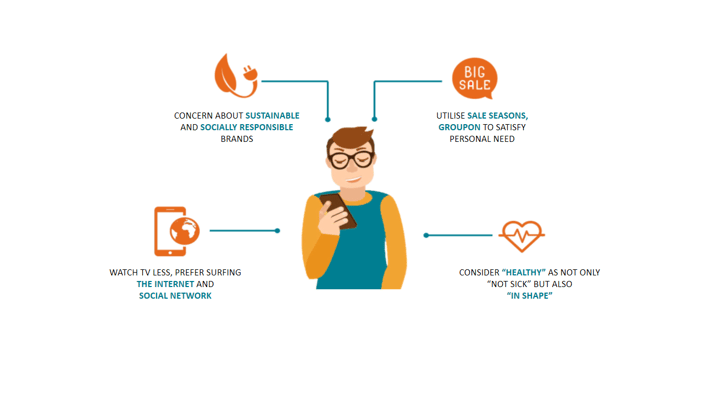
Additionally, they value the meaning of work, work-life balance, and opportunities to learn and grow over high pay. At first glance, it is easy to conclude that we need to make loads of adjustments to the recruitment process to accommodate this cohort, but as we dig deeper, everything is not what it seems.
IBM's 2015 study found that, in fact, Millennials are not that much different from previous generations (Generation X and Baby Boomer) in terms of expectations at the workplace. In particular:
1. “To create positive impact on the organisation” is the first priority in their career.
2. An inspirational leader decides engagement with the organisation
The difference between Millennials is like the top visible part of an iceberg; we can only see what is visible on the surface. And maybe the media is also guilty of making this matter complicated, which makes the remaining hidden portion of the iceberg remains hidden.
Such an ironic situation. We acknowledge their role, their importance, but we misunderstand their needs and wishes. This eventually leads to the mismatch between what we provide them (environment, support, or even challenges) and what they expect from us, making it hard for Millennials to be loyal to the job.
When asked “What do Millennials prioritise in their job?”, Millennials and their managers often come up with priorities. A high salary is not the most important element in an offer for Millennials. Instead, it is meaningful work and the feeling of being valued are what this cohort concerns the most at work.
Besides, they also appreciate opportunities for development, career progression, flexibility at work, and frequent feedback on their work. Sadly, only less than 20% of managers get this expectation right.
This misalignment also suggests a hypothesis that we might be making wrong evaluations of this generation simply because of stereotyping.
Ironically, “lack of teamwork” is among the most common complaint about Millennials. Nobody is naturally a good team player. What matters is the individual’s core behaviours as well as their surrounding environment. Therefore, don’t let the common misconceptions about Millennials cloud your judgement. There might be internal and external factors that have an impact on their performance in a team setting.
Growing up in completely different times causes one generation’s values, beliefs or even interests to greatly differ from another. Millennials are working along with them are professionals from Generation X and older.
When groups of generations, each has distinct expectations and priorities, working under the same roof, it can lead to stereotyping and provoke conflicts. In a multi-generational team, younger members are often frustrated at the older ones as they protest new ways of thinking and strictly follow the traditional methods. Meanwhile, the older generation gets tired of the stubborn and impulsive Millennials for ignoring rules and regulations. Eventually, every team discussion becomes a battle, and no positive result is produced.
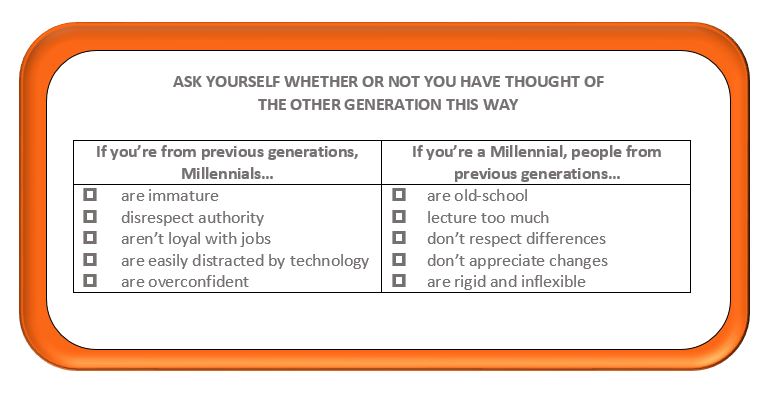 So, will teamwork still be Millennials' nightmare?
So, will teamwork still be Millennials' nightmare?
You can’t solve the problem if you don’t touch the root cause. Millennials are intelligent, tech-savvy and creative individuals. However, it seems like they want to show that either they are competent or possess leadership potential in team discussion. That explains why many young people tend to dominate the discussion, resulting in much more unnecessary tension.
That’s the root cause we mention: They don’t know how to show themselves and their ideas effectively in teams.
An MIT research found out the profile of the ideal team member. This person:
But not everyone can satisfy this profile due to personal differences.
Therefore, instead of trying to become this ideal team member, you’d better understand yourself and adopt a suitable role in your team. Organisations should leverage validated psychometric assessments to gather objective information about the candidates for recruiting and even managing and developing afterwards.
Recruitment is among the HR department's top priorities. Each step in the recruitment process, from sourcing candidates to screening, interviewing, choosing the best fit, and persuading them to accept the offer, poses a challenge. How well organisations can resolve these challenges depends on their willingness to look at each group of candidates and do the following as it pertains to the successful recruitment of each group’s members:
1) keep the effective solutions,
2) stop the ineffective ones, and
3) start new strategies.
This is called the K-S-S method.
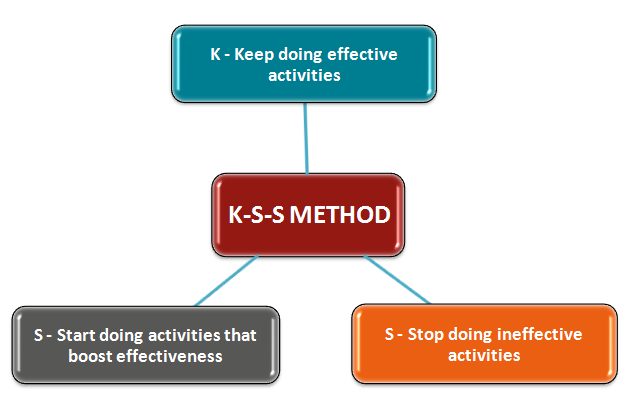
When applying the K-S-S method to recruiting Millennials, what should you focus on?
Social media is the 21st-century platform that enables you to reach, attract, interact, nurture, and recruit talents.
In addition to looking for opportunities online, Millennials also put effort into building their professional images online, particularly popular social media channels and recruiting forums.
You can find passive candidates through these channels, with whom you can interact and introduce opportunities to. Passive candidates take up a large portion of potential candidates. So be sure not to overlook these hidden gems.
If not handled carefully, social networks are a double-edged blade for your organisation’s reputation. Your current employees might complain about the organisation, the job, the manager, colleagues, or even conflicts and drawbacks at the workplace to the online world.
Things can quickly spread like wildfires, causing detrimental damage to the organisation’s image in a potential candidate’s eyes.
In a quick personality test in the form of an interactive online video, Heineken embeds an introduction into its organisational values as well as its working environment and employee lifestyle. Their recruitment campaign, Go Places, was a success and quickly became a sensation on the Internet for quite a while.
Besides Heineken, many other organisations also view social networks, such as Facebook, Twitter, YouTube, and Instagram, as the breeding ground to promote their brands to not only potential clients but also potential employees.
More and more organisations use psychometric assessments to understand their candidates better and find the most suitable ones more quickly among hundreds of applications.
A job-fit assessment produces much more detailed and helpful information for hiring decisions, and candidates can learn about themselves while organisations assess the level of suitability comprehensively, based on thinking style, behaviours, motivation and more, rather than merely on personality.
Put yourself in the candidates’ shoes. Would you feel eager to apply to a company that needs several weeks to respond to your application or announce the interview results?
If there are too many candidates – a common excuse of recruiters for not being responsive – use an applicant tracking system (ATS) to help you do this.
Unstructured interviews are the most ubiquitous selection method. Even though many studies prove the incredibility of unstructured interviews, many HR professionals still jump on the bandwagon.
Stop asking common and boring questions and start using situational questions, small challenges and real-work cases to assess the candidate’s potential and your ability to meet the candidate’s expectations.
We advise you to keep the coaching, mentoring, and experience- and knowledge-sharing sessions going. Make it clear that these learning opportunities are available will show Millennials that you care and are willing to nurture their employees' passion for learning and continuous improvement.
Financial factors remain key, but it is wrong to assume that Millennials only need a high salary to be satisfied. They also pay much attention to family-related benefits.
We do not advise you to keep a benefits system that was approved several years ago. Instead, review and modify these frequently for a better fit with current employees.
Do you want to hire a salesperson? Allow them to be flexible with their working hours as long as they hit the targets.
If you are recruiting interns, highlight training, coaching and experience-sharing programmes by top current performers in the same department to draw the candidates’ attention.
The labour workforce is getting swamped by Generation Z, those who were born after 1995 and are about to looking for more professional roles sooner or later. Employers should really pay attention to who they are,how they think, and what motivates them.
According to a survey by Monster.com, 70 per cent of Gen Z members said salary has an important role in their career decisions, compared to 63 per cent of Millennials.
Seventy-four per cent of them believe jobs should have a higher purpose than “just bringing home the bacon”.
While Millennials prefer work-life balance, 58 per cent of Gen Zs are glad to work unsociable hours for a better salary, and 74 per cent are willing to relocate for a job. wanting to start their own businesses.
Millennials value teamwork and collaboration. By contrast, Gen Z is more competitive and wants to “work on their own and be judged on their own merits rather than those of their team.”
An intriguing aspect of Gen Z is that they actually prefer face-to-face communication despite being true digital natives.
Most likely, they will search for your company on Google and social media before coming for a job interview.
For more detailed information about Generation Z, pleaserefer to this article.
The oldest of Millennials are reaching their 40s and have entered managing positions for quite a while, and soon, they will start overseeing Gen Z. There are misconceptions about the similarities of these two dynamic cohorts, Generation Z and Millennials. They are both tech-savvy, creative, and highly ambitious. But other than that, Gen Z has some very distinct characteristics that may make them better employees than Millennials.
If some of your team members are Gen Z, watch out for these two mistakes when managing Gen Z.
Gen Z grew up during the Great Recession. As such, their outlook on life and work is very much different. They are more realistic and more independent when looking at their future. Being born amidst the internet booming and smartphones era, they are also true digital natives.
On the one hand, we have the Millennials who want to pitch in on their ideas and has a teamwork mentality. On the other hand, Gen Z is competitive, has an entrepreneurial spirit, and wants to be judged on their own merits.
Recent studies have proven that these two cohorts are, in fact, drastically different. Assuming they are and offer them the same training and developing methods would cause demotivation to both groups.
Jonah Stillman (co-author of “Gen Z @ Work: How the Next Generation Is Transforming the Workplace” and a true Gen Z) believes that Gen Z, after witnessing their parents and grandparents struggle financially, would stay with a company for 10 years or more, if they are given the opportunities to advance and if the working environment is desirable.
Gen Z expects their managers to provide multiple career paths or at least create a working environment that exposes them to different roles.
Additionally, these youngsters do not consider higher education as the only path to success. They do not want to live a stressful life paying off debts just like their parents. They will pursue just-in-time learning solutions or will seek development training on the job as alternatives to attending college.
If Millennials strive for freedom at work, Gen Z takes it a step further, blurring the physical and digital worlds evermore. To Gen Z, work can be done effectively anytime, anywhere, not just in the office.
Did you know, including Gen Z, we are having four vastly different generations working under one roof? Working alongside Millennials and Gen Z are two other cohorts: Baby Boomers and Gen X.
The gaping diversity in age, experiences, skill sets, technological understanding, and behaviours have definitely contributed to the already complex HR landscape we are facing today.
Each of these generations experienced a very unique series of events, which have essentially formed their distinct characteristics. Thus, their career paths, aspirations, or work attitudes greatly vary from one generation to another, even to their predecessor - the Silent Generation, who just about a decade ago still constituted a sizable portion of the global workforce.
What do these five generations look like? Check out our infographic below.
.jpg?width=850&name=infographics-multigenerational-workforce-EN%20(1).jpg)
We usually hear that technology is the “divider” causing a disconnection between departments or human beings. However, the suitable technology can help boost collaboration among your employees, enabling a smooth flow of information in real-time via a shared digital workplace.
As such, getting messages across different age groups requires a deep understanding of your workforce and a more streamlined communication method. Nevertheless, humans will never resolve communication issues regardless of the era they are living in.
It is also worth mentioning that the global workforce today is not only multi-generational and diverse, it is also greatly dispersed. A company could have employees and interns that live on the other side of the world and never set foot into their physical headquarters. So they mainly collaborate with colleagues and carry out their daily responsibilities virtually.
Our teams at TRG International experienced the shift in the workplace model when the pandemic struck. Our usual in-office activities got moved online to protect our members and client's health. The swift move, though, fascinatingly did not disrupt our daily communications and service deliveries to our clients.
We believe a multi-generational workforce is not a threat, and age gaps are becoming irrelevant in today’s dynamic and complex HR landscape. COVID-19 is just one ingredient that spices up the mix. Rapid technological advancements, culture shifts, and organisational changes are other major factors that cause employees to reinvent themselves multiple times throughout their careers.
From our experience, instead of solely focusing on age or generation, companies should include cross-training for different positions focusing on the development of transferable skills. This training can have double effects in which it keeps your younger generations engaged while honouring your experienced senior teammates.
Furthermore, as your employees move on to other life choices/ career advancements, companies need to have succession plans in place to combat the loss of critical positions. The plan makes you well aware of the current talent pool and allows you to start nurturing the new crop from day one. This, in turn, makes your young employees feel more engaged as they now see the potential for future development.
According to a Rockefeller Foundation report, 97 per cent of the U.S. employers say entry-level jobs are crucial to their success. Yet many do not handle entry-level hiring well. Some of the most common entry-level recruitment challenges facing companies today are the lack of qualified candidates, high turnover rate, and generational differences in the workplace.
As the labour market is getting increasingly competitive and the Generation Z, those who were born after 1995, is starting to enter the workforce, companies need to take a deeper look at the impact of hiring graduates and how to do it right.
TRG provided great service and solutions for our recruitment and performance management process. TRG consultants are equipped with very good knowledge and have been very supportive.
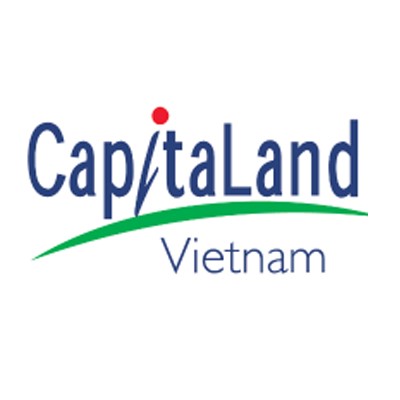
Nguyen Tuan Long Capitaland Vietnam
[TRG consultants] are devoted to supporting our HR team for the best results by thoroughly introducing the solutions, step by step guiding how to use the assessments, simplifying the guideline for users, and on-the-job training to optimise the TRG Talent products.
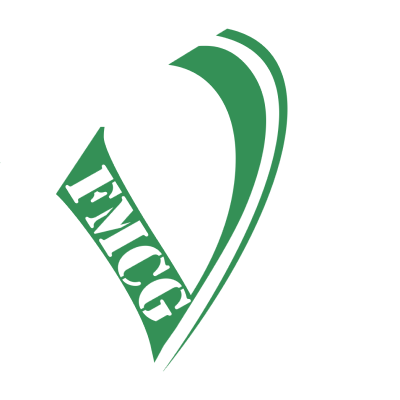
HR Manager FMCG Viet
IT, Talent and F&B - we think it's a great combination.
We've thrived since 1994 resulting in lots of experience to share, we are beyond a companion, to more than 1,000 clients in 80+ countries.

© 2023 TRG International. Privacy Policy / Тerms & Conditions / Site map / Contact Us
TRG encourages websites and blogs to link to its web pages. Articles may be republished without alteration with the attribution statement "This article was first published by TRG International (www.trginternational.com)" and a clickable link back to the website.
We are changing support for TLS 1.0 and older browsers. Please check our list of supported browsers.